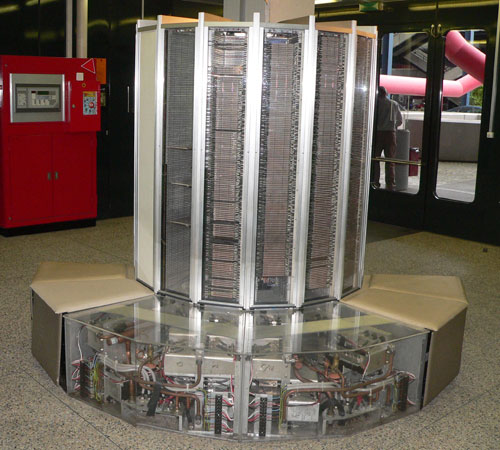 The philanthropic organization One Laptop per Child
(OLPC) never quite managed to hit its price point for its "$100 laptop,"
but now the organization is sketching a concept for a $75 tablet
computer that it hopes will further decrease power consumption and
pioneer the first flexible LCD display.
The philanthropic organization One Laptop per Child
(OLPC) never quite managed to hit its price point for its "$100 laptop,"
but now the organization is sketching a concept for a $75 tablet
computer that it hopes will further decrease power consumption and
pioneer the first flexible LCD display.
"A tablet is simpler than a laptop, so it's easier to make a tablet cheaper," says Ed McNierney, OLPC's chief technology officer. But beyond that basic advantage, he says, the key to achieving super-low cost while also innovating is by working to establish common designs that can be broadly adopted and customized by other companies.
The project starts with processor technology from a commercial partner, Marvell, known for super-low power consumption--potentially as little as one watt, compared to the five watts consumed by OLPC's flagship machine, the XO. Marvell is already customizing tablet platforms for use in U.S. schools.

 James Sinclair, head of the hospitality industry turnaround firm
James Sinclair, head of the hospitality industry turnaround firm  Montgomery County's Department of Economic Development is seeking $2 million from the county's rainy day fund to attract biotech companies.
Montgomery County's Department of Economic Development is seeking $2 million from the county's rainy day fund to attract biotech companies.
 President Obama has made it a priority to address one of America’s greatest challenges, meeting energy demand in a sustainable way by transforming the ways we produce and consume energy. He assembled a team that could help him in this task, such as science adviser John Holdren, Energy Secretary Steven Chu and energy adviser Carol Browner. Congress in turn is working on climate change legislation that could foster a new wave of energy innovation. Senators John Kerry and Joe Lieberman have recently unveiled their new energy bill that would introduce fees on carbon emissions. Other recent developments in Washington have included entrepreneurs, which signals a government push to leverage their risk-taking behavior and the power of individual innovators.
President Obama has made it a priority to address one of America’s greatest challenges, meeting energy demand in a sustainable way by transforming the ways we produce and consume energy. He assembled a team that could help him in this task, such as science adviser John Holdren, Energy Secretary Steven Chu and energy adviser Carol Browner. Congress in turn is working on climate change legislation that could foster a new wave of energy innovation. Senators John Kerry and Joe Lieberman have recently unveiled their new energy bill that would introduce fees on carbon emissions. Other recent developments in Washington have included entrepreneurs, which signals a government push to leverage their risk-taking behavior and the power of individual innovators. Divide your salary by 1,000. While recommending business books on a blog post last week I said a business book pays for itself in less than an hour. A reader asked me how I measured that. If you want quick and dirty, then divide the annual salary by 1,000 and that’s the hourly cost to the company. That’s your time-is-money rate. It’s valid for you, for your team members, for your company.
Divide your salary by 1,000. While recommending business books on a blog post last week I said a business book pays for itself in less than an hour. A reader asked me how I measured that. If you want quick and dirty, then divide the annual salary by 1,000 and that’s the hourly cost to the company. That’s your time-is-money rate. It’s valid for you, for your team members, for your company.
 If you are a subscriber to Mahalo CEO Jason Calacanis's listserv (you are, right?), you probably found your email inbox slammed last week when the list briefly allowed recipients to reply to the entire list. In today's "Jason Nation" missive, Calacanis apologized, explaining the error and using it as a launching pad to discuss what can be an unpleasant but sometimes necessary task: firing an employee at your startup.
If you are a subscriber to Mahalo CEO Jason Calacanis's listserv (you are, right?), you probably found your email inbox slammed last week when the list briefly allowed recipients to reply to the entire list. In today's "Jason Nation" missive, Calacanis apologized, explaining the error and using it as a launching pad to discuss what can be an unpleasant but sometimes necessary task: firing an employee at your startup. To achieve victory in the corporate world, a start-up needs three things, says serial entrepreneur and Netscape founder Marc Andreessen. One of those – a product that’s ten times better than the nearest competitor – has a little wiggle room, but the others need to stand firm. Andreessen describes all three in this entrepreneur thought leader lecture given at Stanford University.
To achieve victory in the corporate world, a start-up needs three things, says serial entrepreneur and Netscape founder Marc Andreessen. One of those – a product that’s ten times better than the nearest competitor – has a little wiggle room, but the others need to stand firm. Andreessen describes all three in this entrepreneur thought leader lecture given at Stanford University. The Economic Development Administration (EDA) has announced it is soliciting applications for the FY 2010 "Mapping Regional Innovation Clusters Project" competition.
The Economic Development Administration (EDA) has announced it is soliciting applications for the FY 2010 "Mapping Regional Innovation Clusters Project" competition. A Chinese machine clocked in as the second-fastest on the latest list of the world's 500 fastest supercomputers—making the country a serious challenger to American dominance in the industry.
A Chinese machine clocked in as the second-fastest on the latest list of the world's 500 fastest supercomputers—making the country a serious challenger to American dominance in the industry.

 The latest crop of Facebook rivals is not driven by monetary ambitions but more altruistic causes. These efforts at snubbing the world's most popular social network site are being spearheaded by those aggrieved or even outraged by Facebook's actions.
The latest crop of Facebook rivals is not driven by monetary ambitions but more altruistic causes. These efforts at snubbing the world's most popular social network site are being spearheaded by those aggrieved or even outraged by Facebook's actions.
 here are many things that make me a crappy entrepreneur. Just naming a few: I second guess myself, I spend too much time on projects, and the act of speaking to people in real life makes me want to throw up. Not exactly a shining example of a business owner, right?
here are many things that make me a crappy entrepreneur. Just naming a few: I second guess myself, I spend too much time on projects, and the act of speaking to people in real life makes me want to throw up. Not exactly a shining example of a business owner, right? SAN FRANCISCO — When one of the most important e-mail messages of his life landed in his in-box a few years ago, Kord Campbell overlooked it.
SAN FRANCISCO — When one of the most important e-mail messages of his life landed in his in-box a few years ago, Kord Campbell overlooked it.
![[vctip0606]](http://si.wsj.net/public/resources/images/OB-IT588_vctip0_D_20100604175312.jpg) The process of selecting, pitching and ultimately negotiating with a VC can be intimidating, especially to those not accustomed to the world of high finance. I asked Lori Hoberman, head of Chadbourne & Parke LLP's emerging-companies/venture-capital practice in New York, to explain the various steps. Here's what she said:
The process of selecting, pitching and ultimately negotiating with a VC can be intimidating, especially to those not accustomed to the world of high finance. I asked Lori Hoberman, head of Chadbourne & Parke LLP's emerging-companies/venture-capital practice in New York, to explain the various steps. Here's what she said: